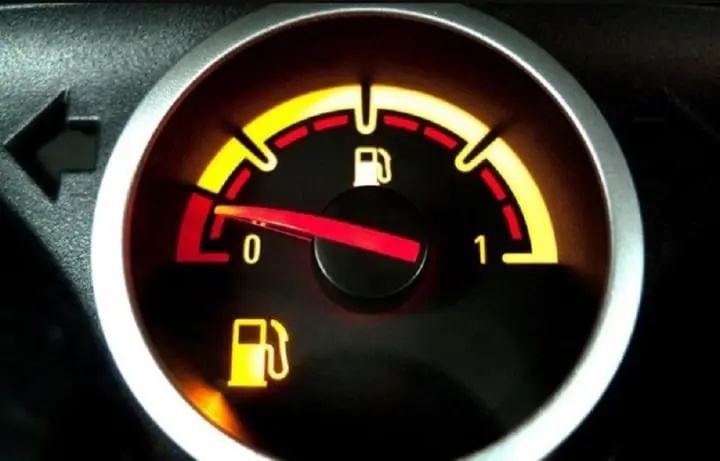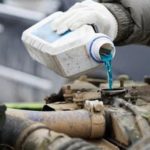Causing Damage to the Fuel Pump
According to experts, attempting to drive with a low fuel tank can impact the fuel pump, one of the most vital parts of a car.
The fuel pump is directly connected to the fuel tank and is responsible for drawing fuel into the combustion chamber, with fuel acting as a coolant for the fuel pump. When there is not enough fuel, the pump will draw in air. This condition can frequently occur and can damage the filter and motor, causing the car to suddenly shut off while driving, sputter when accelerating, and experience engine vibrations.
Additionally, deposits in the fuel tank can also be sucked into the fuel pump and injectors, leading to clogs and damage to the systems if it occurs repeatedly.

Running the car until the fuel tank is empty several times can cause detrimental effects to the car. (Image credit: Danchoioto.com)
Negative Impact on the Car Engine
Driving a car with a low fuel tank can have a negative impact on the engine, mechanical parts, power steering system, and brakes, according to experts. The reason is that mechanical parts only operate efficiently and durably when the fuel tank is full. Moreover, these components are susceptible to erosion from external factors.
The deposits that accumulate in the fuel filter not only cause clogs that prevent fuel from entering the combustion chamber but also increase the risk of dirt entering the fuel lines and the car’s engine. If this condition is not addressed promptly, it can lead to issues with the exhaust system, corrosion of the engine, and reduced performance.
Increased Risk of Sudden Stops on the Road
Many drivers try to continue driving when the car is running low on fuel before refueling. However, car owners cannot be certain that the remaining amount of fuel in the tank will be sufficient to reach the next gas station. In the event of complete fuel depletion, the car will suddenly stall, affecting time, work, and even causing surprises for the following vehicles, potentially leading to regrettable accidents.
Therefore, drivers should check the fuel tank before each trip or use a map to stop at the nearest gas station.
Recognizing When the Car Is Running Low on Fuel
When the car is running low on fuel, the fuel indicator light will illuminate as a warning for the driver to refuel. Typically, the fuel indicator light illuminates when the car has about 10 – 15% of the fuel capacity remaining in the tank. Each car model will have a different fuel tank capacity and a different level of remaining fuel when the indicator light comes on.
The fuel indicator light operates based on a sensor that detects the fuel level in the tank. Specifically, there is a fuel sensor in the fuel tank, and as the fuel is consumed, when the fuel sensor reaches a certain threshold, the light will illuminate, indicating to the driver that the fuel is running low and needs to be refueled. Additionally, the fuel warning system may vary depending on the slope of the road. Therefore, the warning in some cases is only relative.
After the fuel indicator light comes on, it is estimated that the car can still travel for about 30 – 70 km, depending on conditions. The fuel warning system has two levels: a solid light indicating that it is time to refuel and a flashing light indicating that the fuel tank is running critically low.
To avoid the situation of running out of fuel on the road, which can affect the journey and minimize any unnecessary harm to the car, experts advise drivers to pay attention to the fuel level. Users should refuel when the tank has approximately half of the fuel remaining.
Source: VTC News


































